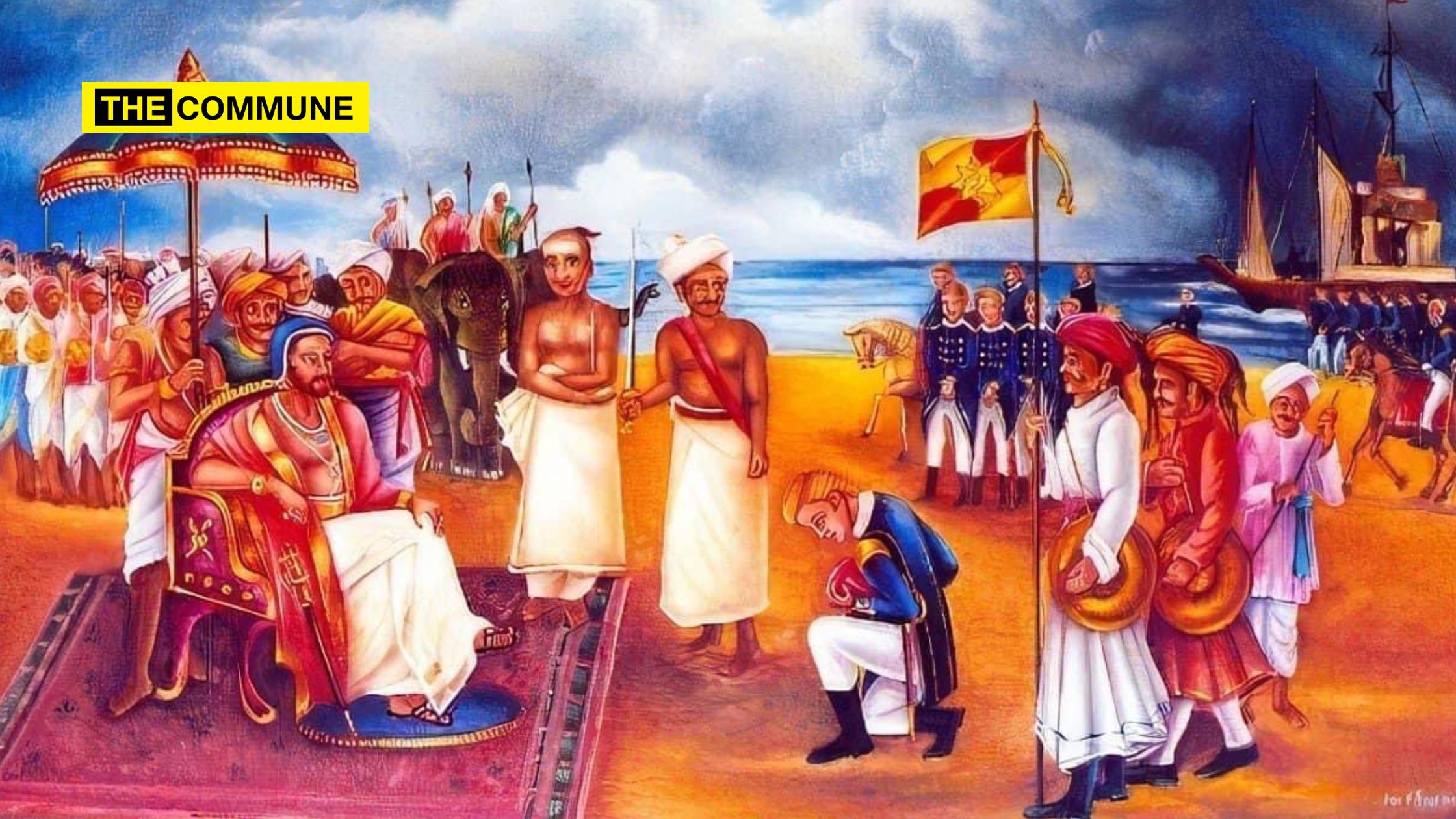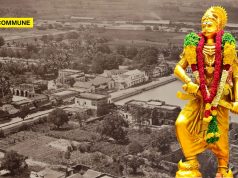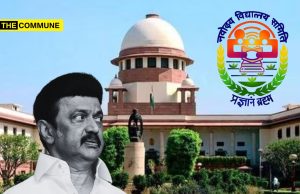
In the early 18th century, when the Dutch and English were vying to control the lucrative spice trade in Kerala, Marthanda Varma emerged as a titan of a king who defeated them, monopolised the spice business and shaped the course of Travancore’s history.
This is the story of how a king who built a great empire gave it all away to Sree Padmanabhaswamy to become a humble ‘Padmanabha Dasa’.
Medieval Kerala
The early 18th century was when medieval Kerala’s political structure was going through a period of turmoil. The state had become decentralised with the Ettuveetil Pillamar (local landlords) and the Madampimar (the barons) calling the shots. The authority of the throne was curbed by the Yogakkar (council of eight and a half), who also managed the Padmanabhaswamy Temple. There was no standing army, and the various royal lineages constantly clashed. This left the field open to the Dutch and English traders to assert their supremacy over the lucrative spice trade, often resorting to blocking the West Coast.
It was in such chaotic times that one man emerged, who defeated the Dutch, founded the kingdom of Travancore, created a modern army on European lines, and established his region’s monopoly over the spice trade.
Anizham Thirunal Marthanda Varma
He was born in 1706 to Raghava Varma of Kilimanoor and Rani Karthika Thirunal of Attingal in the Trippappur Swaroopam, which was then just a small kingdom, between Edava in the north and Aralvaimozhi in the south. Marthanda Varma would ascend the throne at a time of great crisis.
The then ruler of Venad (present-day Travancore), Rama Varma, was at the mercy of the East India Company and Madurai Nayaks, with whom he had entered into treaties for support against the troublesome nobles in his court. The British had already set up a factory at Vizhinjam in 1644, while the Ajengo Fort was strengthened in 1695 by them.
The Padmanabhaswamy Temple, on the other hand, was facing a funds crunch. Add to it the Thampi brothers, the sons of Rama Varma, revolted against him, with the help of the Madurai Nayaks.
How Marthanda Rose To Power
Marthanda subdued the revolt and drastically curtailed the powers of the Ettuveetil Pillamar, the Nair aristocracy, and the Yogakkara. Realising that the Dutch power in Kerala stemmed from their monopoly over the spice trade, he turned his attention to Central Kerala, the hub of spice cultivation.
Kollam was conquered in 1731, and annexed, as the strategically important port fell into his hands. Marta soon fell, while the neighbouring principality of Kayamkulam formed an alliance with the Kingdom of Kochi, allying with the Dutch too. However, the Travancore army seized Nedumangadu and Kottarakkara, while the Kayamkulam ruler was killed in 1734.
Marthanda Varma next targeted the Elayadathu Swaroopam( Kottarakara) after the death of its chief, whose princess took refuge in Thekkumkur. The Dutch Governor of Ceylon, Gustaaf Willem van Imhoff, sensing an opportunity, reinstated the princess. However, Marthanda Varma defeated the combined army of Kottarakara and the Dutch in 1741, as the principality was annexed to Travancore.
After consolidating his hold over Travancore, Varma targeted the Dutch forts, capturing them in a series of raids. The Dutch felt threatened by Marthanda Varma’s expansionist policy, as they felt that the British, with whom he had a treaty, would gain the upper hand in the pepper trade here. Gustaaf Van Imhoff, the Dutch Governor, wrote to Varma asking him to stop his campaign. It was the last battle of the Travancore-Dutch war, a series of other battles fought for the supremacy of the West coast, between Travancore and the Dutch supported by smaller kingdoms, who felt threatened by his expansionist policy.
Dutch Action
The Dutch Governor of Ceylon, Gustaaf Willem van Imhoff, visited Kochi in January 1739 and recommended military action to protect their interests. The Dutch in turn organized an alliance of Kochi, Kollam, and Kayamkulam, while van Imhoff personally met Marthanda Varma to negotiate peace. When Imhoff threatened to wage war, Varma shot back saying he had been thinking about invading Europe someday.
The Dutch declared war on Travancore in late 1739, deploying a unit under Captain Johannes Hackert. They had success initially, forcing the Travancore army to retreat from Kollam, and marched all the way up to Attingal and Varkala. However, when they launched another campaign in 1740, the Travancore Army fought back, attacking the Dutch factories, and taking possession of their goods.
Marthanda Varma defeated the Dutch at the historic battle of Colachel on 10 August 1741. The Dutch were utterly routed at Colachel, and most of their soldiers were taken prisoner, including their commander Eustachius De Lannoy. By 14 August 1741, all the Dutch fortifications in the region were captured and they had to retreat to Kochi, which was a total rout for them. It put an end to the Dutch plans to expand on the West Coast and in a way helped in the modernization of the Travancore army too.
He pardoned De Lannoy and Donadi and used their services to modernize their army. De Lannoy the erstwhile Dutch commander, brought in modern artillery techniques, and firearms to the Travancore army, and trained them in the European military drill tactics. He became the Valia Kapitaan, the Commander in Chief of Travancore, and would play a major role later.
Revolt in Kayamkulam
Varma still faced trouble from Kayamkulam, who, under Achyuta Warrier, continuously revolted against his rule. Reinforcing his army with the latest cavalry from Tirunelveli, he mounted an assault on Kayamkulam, annexing the principality in 1742 under the Treaty of Mannar. The Kayamkulam chief however did not yield easily and again countered with an alliance of Kottayam, Kochi, Ambalapuzha, and Changanaserry in 1746. Varma once again defeated the alliance, and the Kayamkulam ruler fled to Kochi where he took refuge.
In 1753, the principalities of Kottayam, Ambalapuzha, and Changanaserry, along with Meenachil, were annexed to Travancore. The tributary states of Karappuram and Alangad were ceded by the Kochi ruler. With the defeat of the Kozhikode ruler at Purrakada, Marthanda Varma emerged as the most powerful ruler. His kingdom of Travancore extended all the way from Kanyakumari up to Kochi.
He also declared a state monopoly on the spice trade in 1743, dealing a huge blow to Dutch hegemony.
Marthanda Varma as a Ruler
Marthanda Varma was an equally wise ruler, bringing in many changes in the administration, he dismantled the medieval aristocracy, that called the shots, creating a more centralized system of governance. He built up a modern bureaucracy, appointing a Dalava to look after military and economic affairs. The Dalava presided over a vast hierarchy from the Valia Sarvadhi Kariakkars at the top to the Kariakkars, Manikars, and Adhikaris at the lowest level. He introduced new divisions called Adhikaram and Mandapattu Vatukkal.
His other achievement was building up a modern army of 50,000 on European lines. A key unit of his army was the Travancore Nair Brigade or the Nair Pattalam. Initially, it had only Nairs, but later, other communities were admitted; its first commander was Kumaraswamy Pillai.
This Nair Pattalam was later integrated into the Indian Army as the 9th and 16th Battalions of the Madras Regiment in 1954. During Marthanda Varma’s time, however, they were the sword arm of the Travancore Army and played a crucial role in his campaigns. Artillery batteries were placed along the coast from Purakkad to Kanyakumari, and a series of forts were established for safeguarding.
He also brought about reforms in agriculture, with the development of water harvesting, irrigation projects, and the introduction of commercial crops. He also introduced the system of Kullikanam, by which tax reductions called Naduvukkur and Vettalivu were granted to freshly sown lands.
Sree Padmanabhaswamy Temple
Marthanda Varma renovated the Sree Padmanabhaswamy Temple to the current structure we are familiar with and introduced state ceremonies like Murajapam and Bhadra Deepam. He also reconstructed the main deity, with the earlier one destroyed in a fire during Rama Varma’s reign.
In 1749, he donated his kingdom to Padmanabhaswamy and called himself Padmanabha Dasa. This tradition continued among the Travancore rulers. Thiruvananthapuram became a major city during his reign, and many artists and scholars migrated here.
He also patronised different temple forms, such as Koothu, Padhakam, Kathakali, Thullal, and Koodiyattam. Among his court poets were Ramapurathu Warrier and Kunchan Nambiar.
Although the great ruler passed away in 1758, he left behind a rich legacy with his administrative and economic reforms. His strong army meant that Travancore would successfully resist the invasions of Tipu Sultan later, unlike Malabar, which was devastated.
(This article was originally published in History Under Your Feet Blog and has been republished with permission)
Ratnakar Sadasyalu is a blogger with a passion in movies, music, books, and history. A techie by profession and a writer at heart. Author of City of Victory a book on Vijayanagar Empire.
Subscribe to our channels on Telegram, WhatsApp, and Instagram and get the best stories of the day delivered to you personally.




